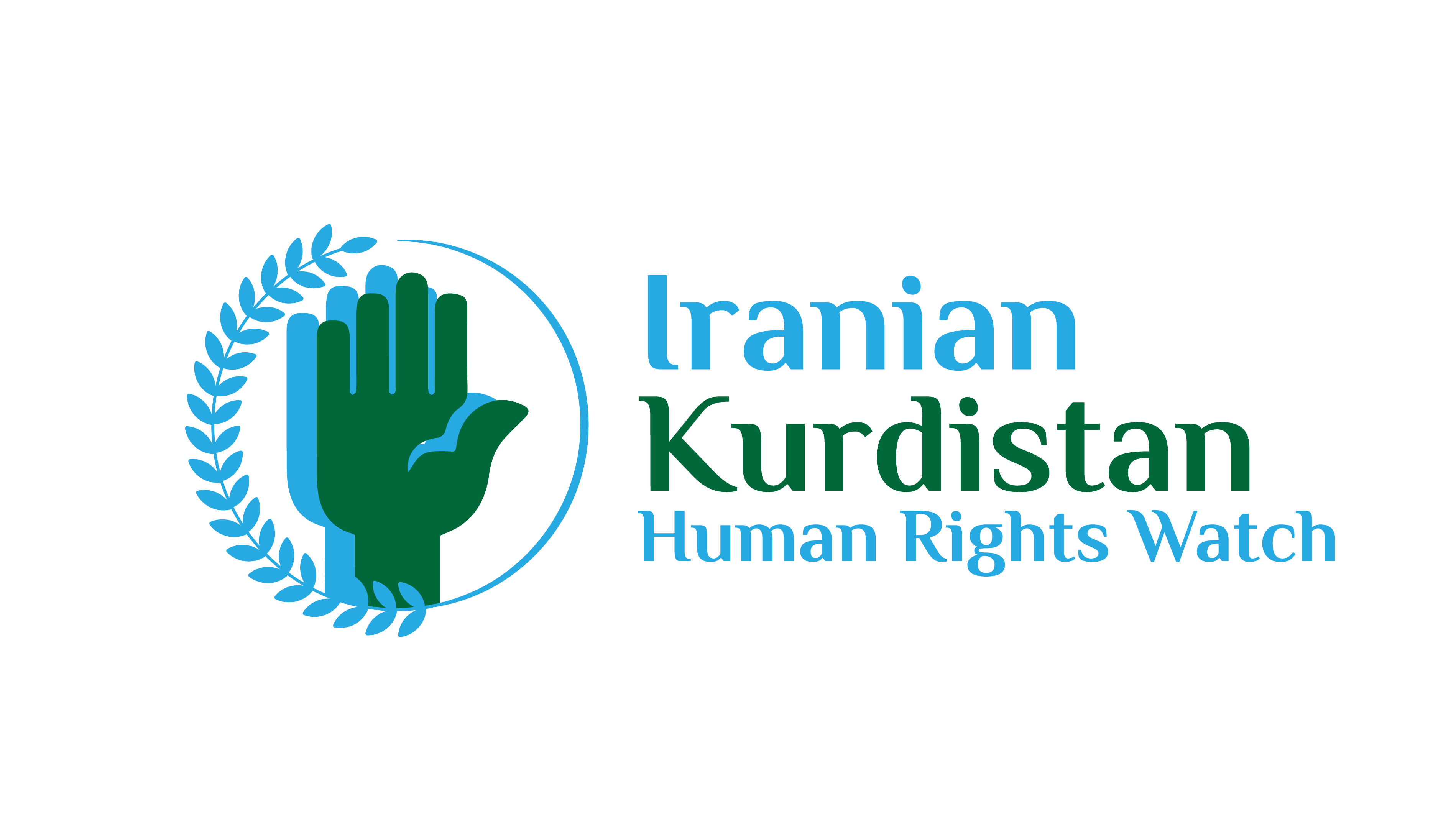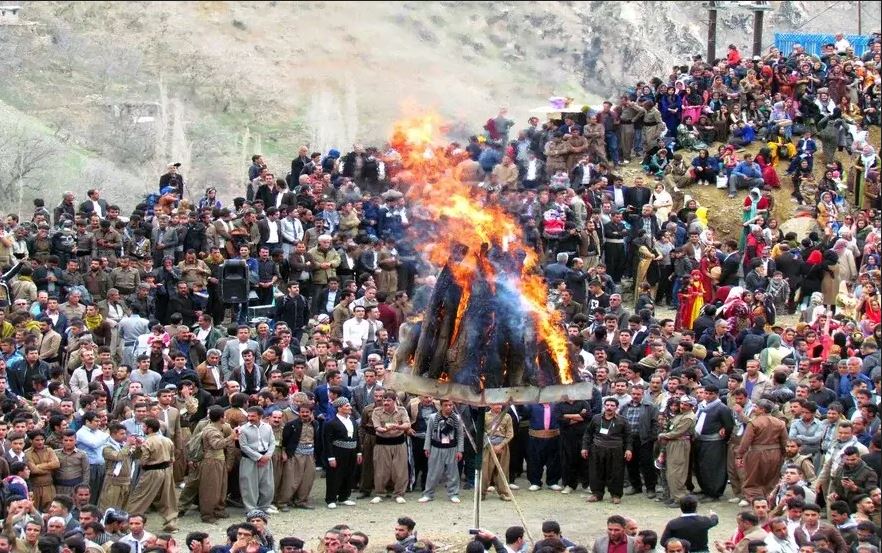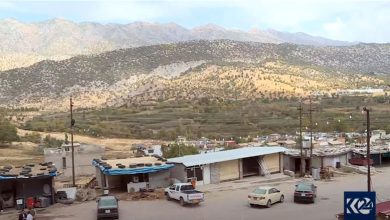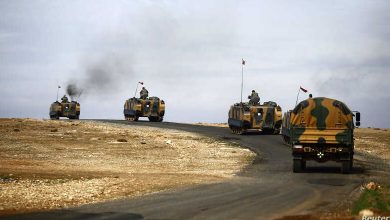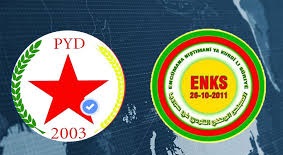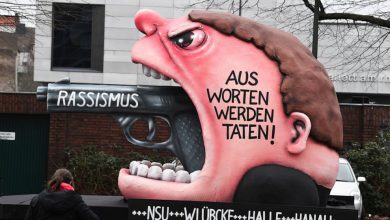A response from Dr. Ali Farahmand, CEO of the Iranian Kurdistan Human Rights Watch, to the statement by a group of specialists, artists, and cultural experts concerning the Nowruz celebrations
Esteemed compatriots,
Respected and concerned intellectuals,
The recent statement by a number of specialists and cultural activists regarding the “Nowruz ceremonies in the western and northwestern regions of the country” undoubtedly stems from a national concern and a desire to preserve Iran’s historical identity, a concern that in itself is worthy of appreciation. The signatories’ reference to the policies of neighboring countries regarding Nowruz, where “some neighboring countries, whose national celebration Nowruz is not, and whose governments, at least until now, have not officially recognized it,” effectively exposes the duplicitous policy of a particular country concerning Nowruz and the Kurds, and its fueling of certain ethnic disputes and tensions in Iran, which is commendable.
Similarly, the warning about the enemies’ attempts to “activate ethnic fault lines in the country” with the aim of “disrupting the unity of dear Iran,” the criticism of “untimely and divisive discussions such as the proposal of ‘federalism’ based on unjustified and strange references to certain religious texts,” the explicit criticism of “the distortion of Article 15 of the Constitution by the executive branch’s spokesperson,” the objection to addressing provincial governors as “provincial presidents,” and the courageous critique of “the highest executive official’s meeting with certain extremist, ethnocentric individuals who are hostile to the pillars of Iran’s national identity” all demonstrate the authors’ freedom and insightful, intelligent perspective. However, a careful examination of this statement reveals that some of its data suffer from incorrect interpretations, one-sided analyses, and at times, a lack of awareness of the cultural and social context of the regions mentioned, particularly the provinces of Kurdistan and West Azerbaijan. Therefore, to clarify the actual dimensions of the situation, we respectfully offer the following points with necessary documentation:
- Nowruz: The Most Iranian Celebration with Ancient Roots in Kurdish Culture
Nowruz is not merely an Iranian national celebration but a fundamental pillar of the historical, linguistic, and cultural identity of Iranian ethnic groups, especially the Kurds. This tradition has been celebrated in Kurdish regions for centuries with particular splendor and within an authentic framework, not as a “minor ethnic” ceremony but as part of a genuine Iranian-Kurdish civilization whose living roots are still evident in the literature, music, and Nowruz customs of the Kurdish people. Unfortunately, the characterization of this tradition as a “minor ethnic and tribal ceremony” reflects a regrettable ignorance of the culture of the noble people of Kurdistan and warrants reconsideration. The authors of the statement claim that “in a relatively unprecedented move, the ground was prepared for holding ceremonies titled ‘Welcoming Nowruz’ and then ‘Nowruz Celebration’ by relevant government institutions in some western and northwestern provinces of the country, without prior, precise, and expert planning regarding the manner of holding and implementing them.” Regarding this claim, there are three important issues:
- First, is it expected that every public Nowruz ceremony requires precise government planning? Are public gatherings at Hafezieh and religious sites necessarily enabled by predetermined government plans?
- Second, describing the holding of Nowruz ceremonies as “relatively unprecedented” is incorrect. Similar ceremonies have always been held in Kurdish regions.
- Third, the authors of the statement correctly state that “the Nowruz celebration is an ancient, national, and proud celebration of Iranians and does not belong to any ethnic group or tribe, and all Iranians, regardless of their local language and religion, are part of the spiritual geography of this celebration. Therefore, the exclusive holding of the Nowruz celebration by one group of Iranians…” Does the holding of Nowruz ceremonies by a group of Iranian Kurdish citizens imply “ethnic segregation” of Nowruz? Was anyone prevented from the participation of other ethnic groups in the Nowruz ceremonies?
- Religious Coexistence and Mutual Respect Among Kurds
One of the overlooked aspects in the aforementioned statement is the neglect of the model of peaceful coexistence and religious respect among the people of Kurdistan. Sunni Kurds fully respect the religious occasions of Shiites; to the extent that the coincidence of Nowruz with Shiite mourning periods led to the postponement of celebrations by the Kurdish people, not by force, but out of respect. Is this mutual understanding and respect for religious rituals not worthy of recognition and appreciation? The very fact that Kurds postponed their program out of respect for a Shiite mourning ceremony demonstrates a correct understanding of “the great Iranian national celebration” and the concept of “nationality” and “respect for the religious beliefs of their fellow citizens.”
- Kurdish Attire: An Iranian Heritage, Not a Divisive Factor
The traditional Kurdish attire observed during the Nowruz ceremonies is not an ethnocentric or separatist symbol but an expression of Iran’s cultural diversity. Unlike attire that has been adopted from Western models, these clothes are culturally rooted and indicative of identity. This attire has existed throughout Iranian history and is currently observed in many other parts of Iran, including Lorestan, North Khorasan, and even Sistan Baluchistan. Therefore, if Kurds attend Nowruz ceremonies in their traditional attire, it does not signify their separatism or ethnocentrism.
- The Exploitation by Separatist Groups: A Clear Reality with an Imminent End
The Iranian Kurdistan Human Rights Watch is the first organization that, in recent years, by publishing hundreds of field and documented reports, has exposed the efforts of separatist groups such as PJAK, PAK, Komala, and the Democratic Party of Iranian Kurdistan to appropriate cultural traditions. However, the reality is that in recent years, public awareness, legal and diplomatic pressures, decisive actions by the Iraqi government, and the prosecution of armed groups in the Kurdistan Region have greatly limited their ability to exploit national and religious ceremonies. In fact, if a celebration with an identity-based flavor has been held in Kurdistan, it has been in complete opposition to separatists and not in their service. If Kurds attend the national Nowruz celebration in Kurdish regions in their traditional attire, it signifies respect for Iranian history and national traditions, not support for armed groups that, in the name of defending Kurdish rights, have committed the greatest atrocities against Kurds.
- Virtual Fabrications Using Artificial Intelligence Do Not Replace Field Reality
Some media outlets have published images containing the flags or symbols of terrorist groups. Firstly, if in a gathering of tens of thousands of people, a very small group raises the flag of a terrorist and separatist group, the entire gathering, program, and attendees should not be condemned. Secondly, it must be stated explicitly that these images have no place in the real environment of Iranian Kurdistan, and a large portion of them are the result of forgery and manipulation using artificial intelligence tools by groups affiliated with the Pan-Turkism movement or PJAK and their regional allies. What is happening in the real environment is coexistence, Iranian nationalism, and the rejection of violence.
- The Historical Silence of Nationalist Intellectuals Towards the Suffering of Iranian Kurds
It is appropriate to ask what the reaction of Iranian nationalist intellectuals was when a ten-year-old girl named Airin Mohammadi was forcibly taken to an armed camp by PJAK. When hundreds of Iranian Kurdish children were held captive in PAK camps in the Kurdistan Region, how many of you protested? When the families of the victims went to the Erbil court to file a complaint against Hossein Yazdanpanah, the mercenary and proxy leader of the Region, did your media outlets provide coverage? How many times in recent years have Iranian nationalist intellectuals protested against the underdevelopment of border regions, the de facto division of Iran and its various regions into center/periphery, the violation of the civil rights of Iranian Kurds by armed groups based in the Kurdistan Region, “the raising of ethnic issues and divisive and separatist slogans, and the bringing of foreign countries’ flags into the country’s stadiums”?
- Realism Instead of Abstract Theorizing
We, at the Iranian Kurdistan Human Rights Watch, are fully prepared to provide precise and field documentation of the activities, movements, and appropriation of Kurdish and Turkic terrorist groups to the country’s concerned individuals. We invite all intellectual activists to gain a correct understanding of the people of Kurdistan as the most Iranian ethnicity in Iran by observing field realities. Iran is for all Iranians, and to achieve this goal, it is necessary to distance oneself equally from Pan-Kurdism and Pan-Turkism. Terms such as “ethnicity,” “ethnic group,” “minority,” and phrases such as “natural rights” and “civil rights” of Iranian citizens must be carefully defined so that national unity and the Iranian national identity are not compromised.
Final Words
Kurds are among the most authentic pillars of Iran’s national identity. The Nowruz tradition in Kurdistan has neither ethnic exclusivity nor a separatist nature. Rather, it is an expression of the presence of the most Iranian people in the heart of national culture. Incorrect, uninformed, or hasty analyses only create divisions, while this is a time for unity.
With respect and readiness for national dialogue,
Dr. Ali Farahmand
CEO of the Iranian Kurdistan Human Rights Watch
March 26, 2025
